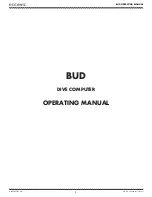
XRF Analyser Manual
31
14 Recalibration
The XRF Analyser has been designed for long term accuracy of measurements. It is
recommended that sulphur check standards are purchased and benefits from periodic
recalibration to ensure the most accurate results.
Contact the manufacturer for details on service and recalibration (see page 32).
15
Technical explanation
An X-ray fluorescence (XRF) spectrometer irradiates samples with high energy
electromagnetic radiation and then detects the X-rays they fluoresce as a result. The
wavelengths and intensities of this fluorescence are characteristic of the chemical
elements present and their concentration within the sample, respectively.
On a more detailed level, XRF spectrometers generate a range of electromagnetic
wavelengths that carry sufficient energy to expel electrons from constituent atoms within a
sample. Atoms that lose an electron from an orbital close to their nucleus are particularly
unstable and spontaneously rearrange their electronic structure as a consequence.
Electrons that occupy orbitals further from the nucleus tend to hop into the recently
vacated hole left by the departed electron in the inner orbital. This electronic transition is
accompanied by the release of an X-ray photon with a wavelength characteristic of the
separation between the two orbitals in question. Given that different chemical elements
have different orbital separations, the wavelength of the emitted X-rays can be used to
diagnose their presence in a sample. Furthermore, the number of X-ray photons detected
at a particular wavelength is proportional to the number of atoms that generated them,
and this can be used to calculate the concentration of an element within a sample. The
key processes involved in X-ray fluorescence are best shown in a diagram.
Summary of Contents for XRF
Page 1: ...XRF Analyser Instruction manual...
Page 2: ...XRF Analyser Manual...
Page 37: ...XRF Analyser Manual 35...






































